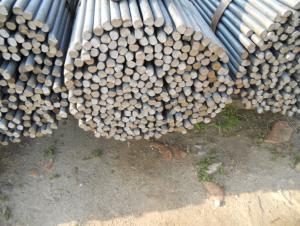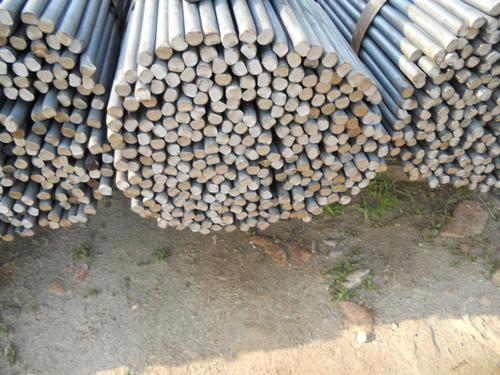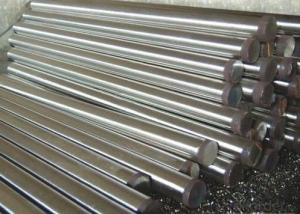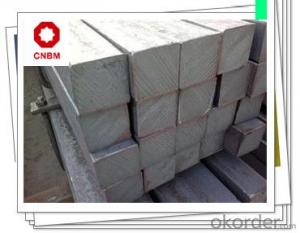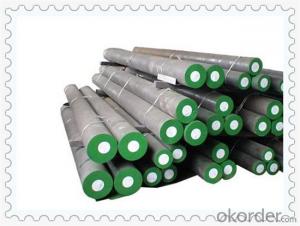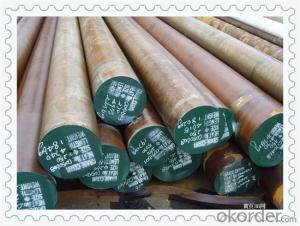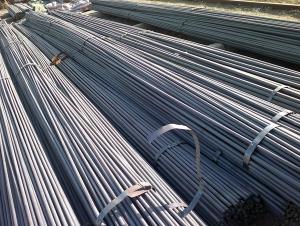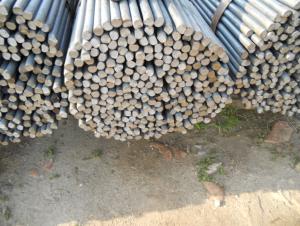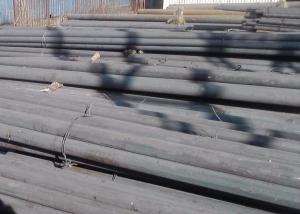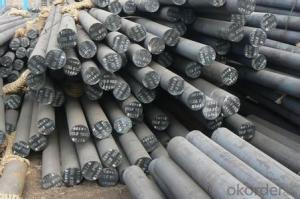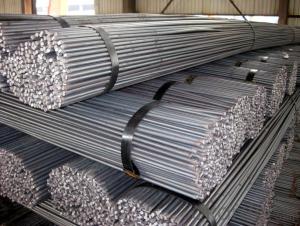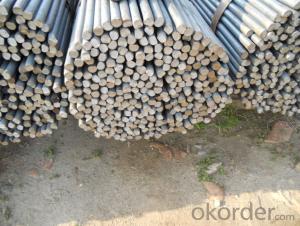Round bar
- Loading Port:
- China Main Port
- Payment Terms:
- TT OR LC
- Min Order Qty:
- -
- Supply Capability:
- -
OKorder Service Pledge
OKorder Financial Service
You Might Also Like
Wire Rod Q235 Details:
| Minimum Order Quantity: | 25 Tons | Unit: | m.t. | Loading Port: | XINGANG PORT,China |
| Supply Ability: | 100,000 Tons Per Month | Payment Terms: | TT or LC |
Product Description:
Specifications of Wire Rod Q235:
Steel Grade: Q235, Standard: GB Diameter: 5.5mm, 6.5mm, 7mm,8mm,9mm,10mm,12mm,14mm
Diameter Tolerance:±0.3mm 6.5mm can be drawing into 2mm/8.0mm can be drawing into 3mm
Brand Name: N-RIVER Place of Origin: Hebei, China Mainland Application: construction, building etc
Chemical Composition:
Please kindly find our chemistry of our material based on Q235 as below for your information
Trademark | Rank | Chemical composition (quality score) % | |||||
C | Si | Mn | S | P | |||
| ≤ |
| ≤ | ≤ | |||
Q235 | A | 0.14-0.22 | 0.30 | 0.30-0.65 | 0.050 | 0.045 | |
Q235 | B | 0.12-0.20 | 0.30 | 0.30-0.70 | 0.045 | 0.045 | |
Trademark | Rank | Pulling Test | |||||
Bend PointΔs/Mpa | Tensile Strength | Elongation Ratioδ5% | |||||
Thickness (Diameter) /MM | Thickness (Diameter) /MM | ||||||
≤16 | 16-40 | ≤16 | 16-40 | ||||
≥ | ≥ | ||||||
Q235 | A | 235 | 225 | 375-500 | 26 | 25 | |
Q235 | B | 235 | 225 | 375-500 | 26 | 25 | |
Usage and Applications of Wire Rod Q235:
After hot-rolled the products shaped into coil and delivery as finished product, including round, square, rectangular, hexagonal and so on. Since most of the products are round, it is generally called wire rod. Carbon steel wire rod is widely used in construction and manufacturing. Carbon steel wire rod is mainly used for reinforcement of reinforced concrete and welded structure or reprocessed (roberts , nail, etc.) materials, especially used to produce wire drawing, welding electrode, nails, spring, electronic, precise machinery parts and so on.
Packaging & Delivery of Wire Rod Q235:
Packaging Detail: products are packed in coil and then shipped by container or bulk vessel
Each coil weight: 2-3MT
Delivery Detail: within 45 days after received deposit or LC.
Label: to be specified by customer, generally, each bundle has 1-2 labels
Trade terms: FOB, CFR, CIF
- Q: How are steel round bars stored and transported?
- Steel round bars are typically stored in warehouses or storage facilities. They are often stacked horizontally on racks or placed in designated storage areas. To prevent damage and ensure easy accessibility, bars of different sizes or grades are segregated and labeled accordingly. When it comes to transportation, steel round bars are commonly loaded onto flatbed trucks or shipping containers, depending on the quantity and distance of the shipment. To prevent movement and potential damage during transit, bars are secured using straps or other fastening methods. Additionally, protective coatings or wrapping materials may be applied to safeguard against corrosion or moisture. Overall, proper storage and transportation practices are crucial to maintain the quality and integrity of steel round bars.
- Q: What are the different international standards for steel round bars?
- Steel round bars have several international standards that define their specifications and requirements. Some commonly used standards are as follows: 1. ASTM A36/A36M: This standard focuses on carbon structural steel shapes, plates, and bars of structural quality. It is used in the construction of bridges and buildings through riveting, bolting, or welding. It specifies the chemical composition, mechanical properties, and dimensional tolerances for steel round bars. 2. ASTM A615/A615M: This standard lays down the requirements for deformed and plain carbon-steel bars used for concrete reinforcement. It covers bars with diameters ranging from 6 to 60 mm and provides guidelines for chemical composition, mechanical properties, and bend tests. 3. BS 4449: This British Standard deals with steel bars used to reinforce concrete. It outlines the requirements for carbon steel bars in different grades, such as B500B and B500C. It specifies the tensile properties, chemical composition, and dimensional tolerances for these steel round bars. 4. DIN 17100: This German standard specifies general structural steels, including steel round bars. It provides guidelines for the chemical composition, mechanical properties, and technical delivery conditions for various grades of steel bars. 5. JIS G3101: This Japanese Industrial Standard covers general structure rolled steel used for various applications. It includes steel round bars and defines the chemical composition, mechanical properties, and dimensional tolerances for different grades of steel bars. 6. ISO 6935-2: This International Organization for Standardization standard specifies the requirements for hot-rolled steel bars used for concrete reinforcement. It provides guidelines for the chemical composition, mechanical properties, and dimensional tolerances of steel round bars used in construction. These examples represent only a few of the international standards available for steel round bars. To ensure compliance and quality of the steel round bars used, it is essential to consult the appropriate standard based on the specific application and requirements.
- Q: Is round steel bar round steel?
- NoRound steel bars refer to hot rolled round steel bars for reinforced concrete. Round bars include high-quality carbon structural steel, round steel, ordinary carbon structural steel round bars, steel bars for prestressed concrete, etc.. Although the shape is round, but the material is different, so steel and round bar is two yards.
- Q: Are steel round bars available in different surface finishes?
- Different surface finishes are available for steel round bars. The surface finish of a steel round bar pertains to the surface treatment or coating that is applied to it. This treatment serves to enhance its appearance, protect it from corrosion, or improve its performance for specific uses. Steel round bars can be found with various surface finishes such as polished, brushed, mill finish, galvanized, or coated with materials like chrome, nickel, or zinc. These diverse surface finishes cater to different needs and preferences in terms of aesthetics, corrosion resistance, and functionality across various industries and applications.
- Q: What is the difference between a centerless ground and a precision ground steel round bar?
- The main difference between a centerless ground and a precision ground steel round bar lies in the manufacturing process and the resulting quality of the finished product. A centerless ground steel round bar is manufactured using a machining technique called centerless grinding. In this process, the steel bar is placed between two grinding wheels, one rotating at a high speed and the other stationary. The rotating wheel removes material from the bar's surface, creating a smooth and evenly-sized round shape. Centerless grinding is known for its ability to produce bars with tight tolerances and excellent surface finish. On the other hand, a precision ground steel round bar is manufactured using a different process called precision grinding. In precision grinding, the steel bar is held in a chuck or fixture and rotated against a grinding wheel. The grinding wheel removes material from the bar's surface, creating a precise round shape with tight tolerances. Precision grinding is often used when a higher level of accuracy is required, such as in applications where the bar will be used as a critical component in machinery or tools. In summary, both centerless ground and precision ground steel round bars offer a high level of dimensional accuracy and surface finish. However, centerless grinding is a more efficient and cost-effective process for producing large quantities of round bars with consistent quality, while precision grinding is preferred for applications that require the highest level of dimensional accuracy and surface finish.
- Q: Can steel round bars be used in the production of medical equipment?
- Yes, steel round bars can be used in the production of medical equipment. Steel is known for its durability, strength, and resistance to corrosion, making it suitable for manufacturing various medical instruments and equipment. Steel round bars can be used to create components such as surgical tools, implants, orthopedic devices, and many other medical apparatus.
- Q: Can steel round bars be used in the manufacturing of appliances?
- Yes, steel round bars can be used in the manufacturing of appliances. Steel is a durable and versatile material that can be shaped into different forms, including round bars, which can be used for various purposes in appliance manufacturing such as structural support, handles, or components.
- Q: Are steel round bars suitable for the production of hydraulic cylinders?
- Steel round bars are indeed appropriate for manufacturing hydraulic cylinders. Steel is renowned for its robustness, longevity, and resistance to corrosion, thus making it an exceptional option for hydraulic purposes. Due to their exceptional tensile strength and capacity to endure substantial loads and pressure, steel round bars are frequently employed in the construction of hydraulic cylinders. Furthermore, steel can be effortlessly machined and welded, enabling accurate production and customization of hydraulic cylinders. In summary, steel round bars possess the essential attributes and capabilities needed for manufacturing hydraulic cylinders.
- Q: How do you calculate the cross-sectional area of a steel round bar?
- In order to determine the cross-sectional area of a steel round bar, it is necessary to possess knowledge of either its diameter or radius. The formula for calculating the cross-sectional area of a circle is A = πr^2, wherein A represents the area and r denotes the radius of the circle. When provided with the diameter of the round bar, one can simply divide it by 2 to obtain the radius. Once the radius is ascertained, it can be substituted into the formula to compute the cross-sectional area. It is important to bear in mind that the value of π is approximately 3.14159.
- Q: Can steel round bars be used in the shipbuilding industry?
- Yes, steel round bars can be used in the shipbuilding industry. They are commonly used for various applications such as structural components, supports, and reinforcement due to their strength, durability, and versatility.
Send your message to us
Round bar
- Loading Port:
- China Main Port
- Payment Terms:
- TT OR LC
- Min Order Qty:
- -
- Supply Capability:
- -
OKorder Service Pledge
OKorder Financial Service
Similar products
Hot products
Hot Searches
Related keywords
